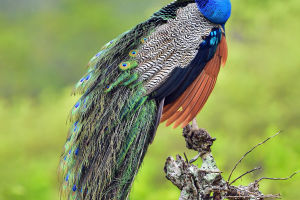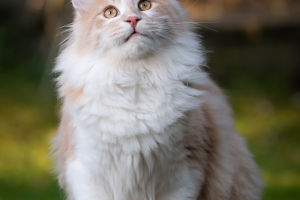King Of Snow Mountains
The snow leopard, an enigmatic and elusive big cat native to alpine snow regions, commands attention with its striking features and adaptations.
Possessing short snouts, broad foreheads, high noses, and rounded heads, these majestic creatures are adorned with a coat of grey-white fur. Swift and robust, they typically weigh between 22 and 55 kg, with males generally outweighing their female counterparts.
Named for its frequent proximity to the snow line and its graceful navigation between snow fields, the snow leopard boasts exceptional skills in blood distribution and breathing regulation. Its thick winter fur, characterized by a mix of grey and white body hair adorned with irregular circular black spots, is most prominent on its body, with fewer markings on the head. The distinctive ring-shaped black mark on its tail seamlessly integrates with the snow-capped mountain environment, adding to the snow leopard's allure.
In the realm of animal aesthetics, if cats are considered representatives of beauty, then snow leopards undoubtedly hold the esteemed title within the feline family. Wherever they roam, the presence of a snow leopard elevates the locale to star status.
Regrettably, in zoos, snow leopards are not as commonplace as their more widely recognized counterparts, like tigers and lions. Many low-altitude zoos lack the necessary conditions to house these magnificent creatures, contributing to a limited understanding of snow leopards among the general public.
The snow leopard, although smaller among the big cat species, exudes a robust charm, with most adults weighing between 22 and 55 kg. A select few larger males may even tip the scales at over 75 kg. Characterized by relatively short limbs and a thick, fluffy coat, snow leopards present a robust and chunky appearance.
Adapted to plateau environments, these elusive cats thrive in regions with altitudes ranging from 3000 to 5000 meters, evolving mechanisms that make them sensitive to oxygen level changes. With highly developed skills such as blood distribution and breathing regulation, snow leopards have mastered survival in challenging terrains.
Despite their prowess, snow leopards are solitary creatures, displaying an aversion to excessive socialization. Their elusive nature has earned them the moniker "the ghost in the mountains," a fitting epithet for the creature often hailed as the "king of snow mountains."
A distinctive feature of snow leopards is their long, thick tails, nearly as long as their bodies. These tails play a crucial role in maintaining balance while navigating snowy or rocky terrains. Moreover, when resting, the long tail hair acts as a protective blanket, shielding the snow leopard's face from frostbite.
Snow leopards primarily prey on large plateau animals such as blue sheep, ibex, and argali, supplementing their diet with smaller animals and birds. Adult snow leopards establish territories ranging from 20 to 40 square kilometers in areas with abundant resources to as expansive as 1,000 square kilometers in regions where food is scarce.
The territories of male and female snow leopards often overlap, but outside the mating period, they maintain their independence. Breeding from January to March and giving birth from May to June, female snow leopards typically have litters of 2 to 4 cubs, with a gestation period of 98 to 105 days. With a lifespan of 18 to 20 years, snow leopards face significant threats from poaching and habitat loss, resulting in a declining population of around 4,500, leading to their classification as an endangered species on the IUCN Red List of Threatened Species. The urgent need for conservation efforts underscores the importance of protecting these regal creatures and preserving their rightful place as kings of the snow mountains.


